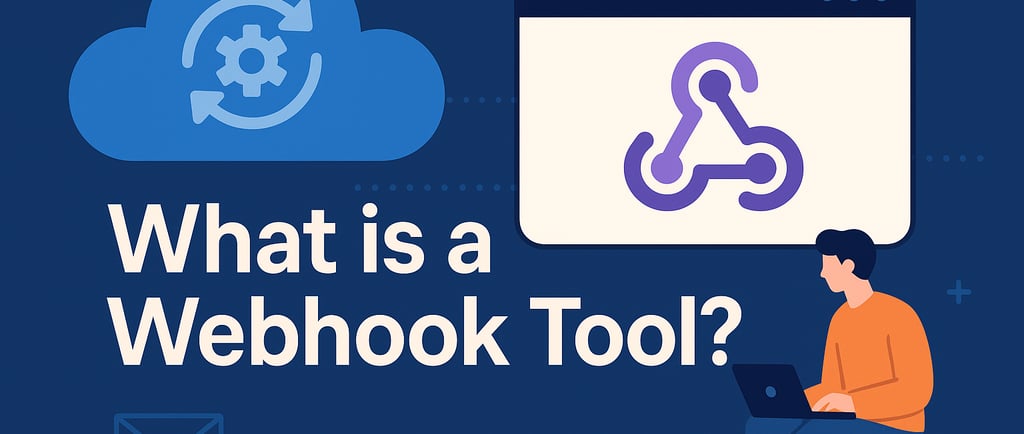What Is a Webhook Tool? A Complete Guide for Real-Time App Integration
Discover what a webhook tool is, how it works, and why it’s essential for real-time data transfer between applications. Learn about top webhook tools and use cases.
Faheem Hassan
6/27/20252 min read


What Is a Webhook Tool? A Complete Guide for Real-Time App Integration
In today’s fast-paced digital world, real-time communication between applications is essential. Whether you're managing customer orders, tracking events, or automating internal workflows, webhook tools are at the heart of seamless, real-time integration.
But what exactly is a webhook tool, and how can it simplify your tech stack? As someone who has worked extensively with APIs, automation, and integrations, I’ll walk you through everything you need to know.
🔍 What Is a Webhook?
At its core, a webhook is a simple way for one app to automatically send real-time data to another whenever a specific event occurs. Unlike traditional APIs that require you to keep "asking" for updates (polling), webhooks push data to you the moment something changes.
Real-World Example:
A user places an order on your Shopify store.
A webhook instantly sends that order data to your inventory management app.
Your team is alerted, and stock is adjusted—all in real time.
No manual refresh. No delays. Just clean, instant data delivery.
🛠️ What Is a Webhook Tool?
A webhook tool is a platform or feature that helps you manage, send, receive, and monitor webhook connections between different systems or apps.
If webhooks are the messengers, webhook tools are the post offices—ensuring the message is formatted correctly, routed securely, and delivered reliably.
⚙️ Key Features of a Webhook Tool
Here’s what the best webhook tools typically offer:
Endpoint Creation: Generate custom URLs to receive webhook data.
Event Triggering: Define which actions should send or receive data.
Data Mapping: Format or transform the payload for compatibility.
Security: Use authentication headers, IP whitelisting, and secret tokens.
Retry Mechanisms: Automatically re-attempt delivery if the first try fails.
Logging & Monitoring: View real-time logs and history of webhook events.
These tools save developers and businesses time by eliminating the need for manual data transfer or excessive polling.
🌟 Best Webhook Tools in 2025
Here are some of the most powerful and popular webhook tools today:
Zapier – Ideal for non-developers; connects thousands of apps with no code.
Pipedream – Great for developers who want low-code workflows and serverless execution.
Webhook.site – Perfect for testing and debugging webhook payloads.
IFTTT – Simple and user-friendly for consumer-level app automation.
n8n – Open-source and self-hostable with advanced logic support.
Hookdeck – Focuses on reliable, scalable webhook management and delivery monitoring.
Each platform offers unique strengths depending on whether you're debugging, building, or scaling.
🧠 Why Use a Webhook Tool?
Still on the fence about using one? Here’s why webhook tools are a smart investment:
Instant data delivery improves user experience and internal efficiency.
Reduces API load by eliminating constant polling.
Automates complex workflows without writing mountains of backend code.
Enhances reliability with retry logic and built-in error monitoring.
Whether you're a solo developer or an enterprise team, webhook tools are essential for building responsive, modern systems.
🧩 Final Thoughts
Webhooks are the silent powerhouses of modern app integration, and webhook tools are what make them manageable at scale. If you're working with automation, real-time notifications, or microservices, learning to harness webhook tools will save you time, reduce errors, and make your workflows infinitely smarter.
